Great Danes are regularly admired due to their elegance, grandeur, and beauty- but what’s the difference between an American vs European Great Dane? As an example, consider the long-running debate between American and European Great Danes, and if European Great Danes are even actual Great Danes. This article will attempt to shed some light on the history of these two canines, while gaining an understanding of their primary distinctions.
American vs European Great Dane: A Comparison
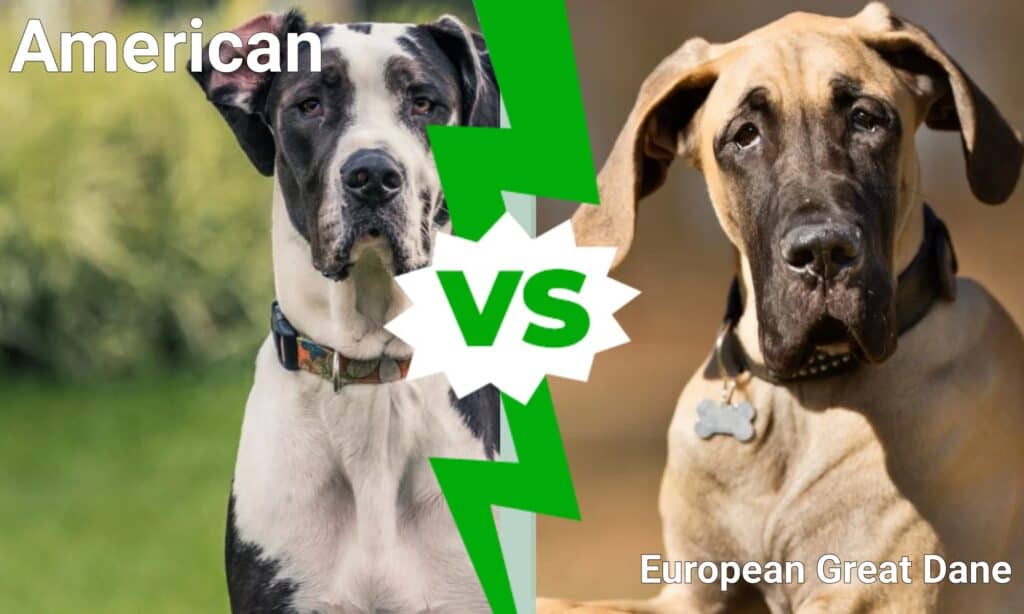
| Key Differences | American Great Dane | European Great Dane |
|---|---|---|
| Height | 28 – 34 inches | 30 – 34 inches |
| Weight | 99 to 200 lbs. | 180 to 240 lbs. |
| Coat type | Short, Dense, Taut | Short, Dense, Wrinkly |
| Colors | Fawn, Blue, Brindle, Merle, Mantle, Black, Harlequinn | Fawn, Blue, Brindle, Merle, Black, Plattenhunde, Mantletiger |
| Temperament | Gentle, Excitable, Intelligent, Loving | Gentle, Reserved, Intelligent, Loving |
| Trainability | Very High | High; Needs Consistency |
| Life Expectancy | 8 to 10 Years | 6 to 8 Years |
| Health Problems | Cardiomyopathy, Hip Dysplasia | Cardiomyopathy, Hip Dysplasia, Bone and Joint Issues |
Key Differences Between American And European Great Dane
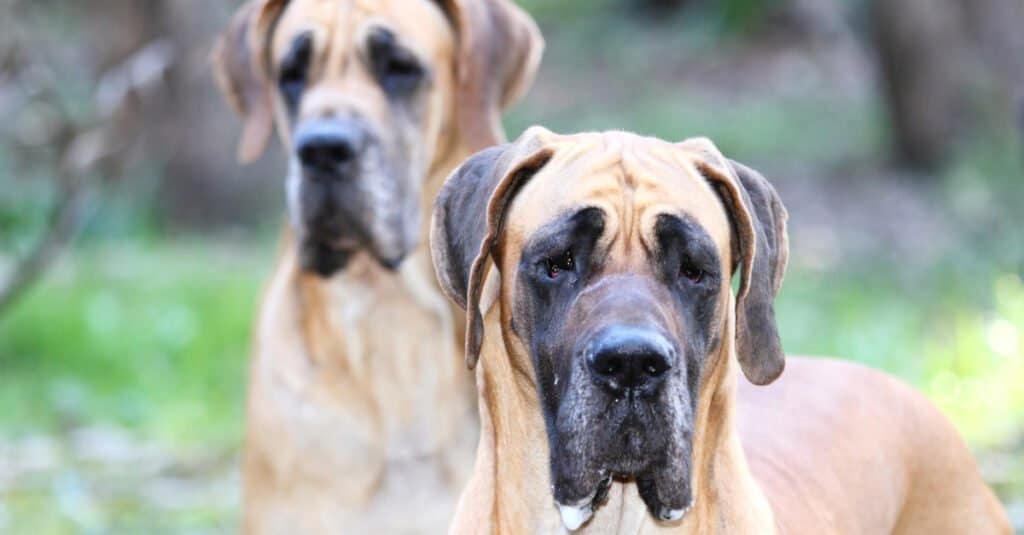
European Danes are described to be larger and more Mastiff-looking than American Great Danes due to their
Greyhound
DNA.
©Jesus Souto/Shutterstock.com
There are some key differences between American and European Great Danes. Both Danes are descended from Mastiffs; however, today European Danes are described to be larger and more Mastiff-looking than American Great Danes due to their Greyhound DNA. European Danes are said to have originated in Europe, whereas American Danes are native to the United States. However, many seem to think that European Great Danes were transferred to America, where they were also bred.
The similarities and variances in physical appearance between the two are minor yet noteworthy. As an example, the American Dane’s head is smaller and more rectangular in shape, with a thinner muzzle and fewer prominent lips. European Danes are defined by their larger, squarer skulls, blunter noses, and drooping lips. Let’s explore their differences further.
Appearance
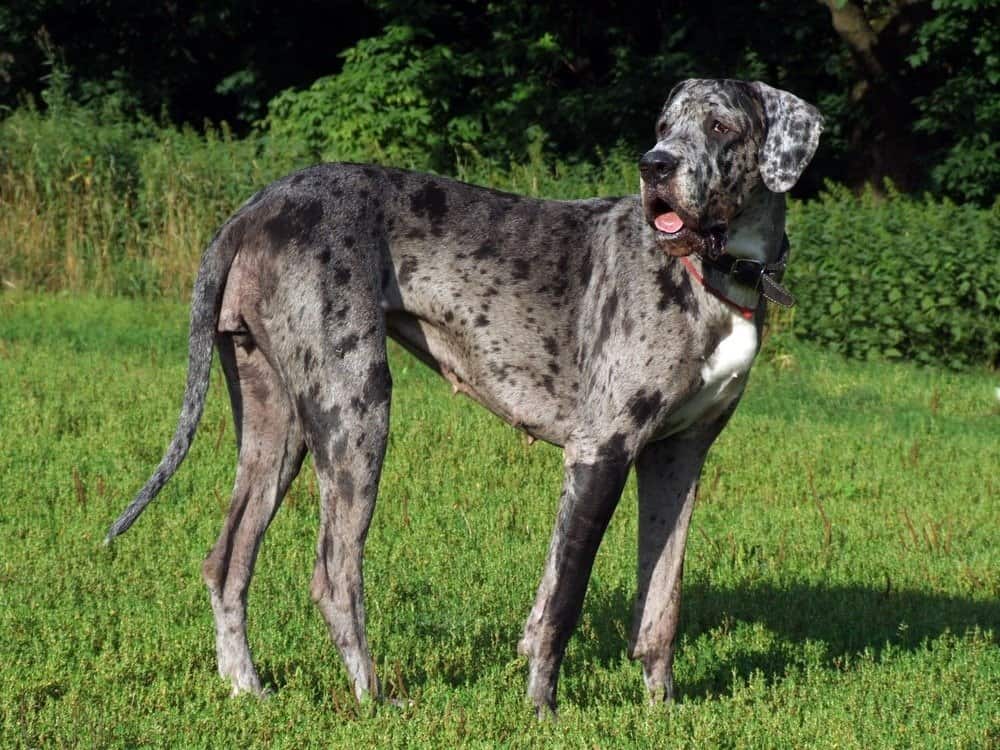
A European Dane has a longer neck, a wider torso, and more wrinkles than an American Dane.
©velora/Shutterstock.com
American vs European Great Dane: Height
There is little difference in height between these two breeds. American Great Danes are distinguished by their long, graceful, and sleek appearance, which gives them the appearance of being taller. Great Danes range in height from 30 to 34 inches. Females stand between 28 and 32 inches tall.
American vs European Great Dane: Weight
This is one point at which the two diverge. American Great Danes are slightly smaller in stature than their European counterparts, weighing between 99 and 200 pounds depending on gender and maturity. European Great Danes are even larger and more muscular than American Great Danes. When completely mature, Great Danes in Europe can weigh between 180 and 240 pounds!
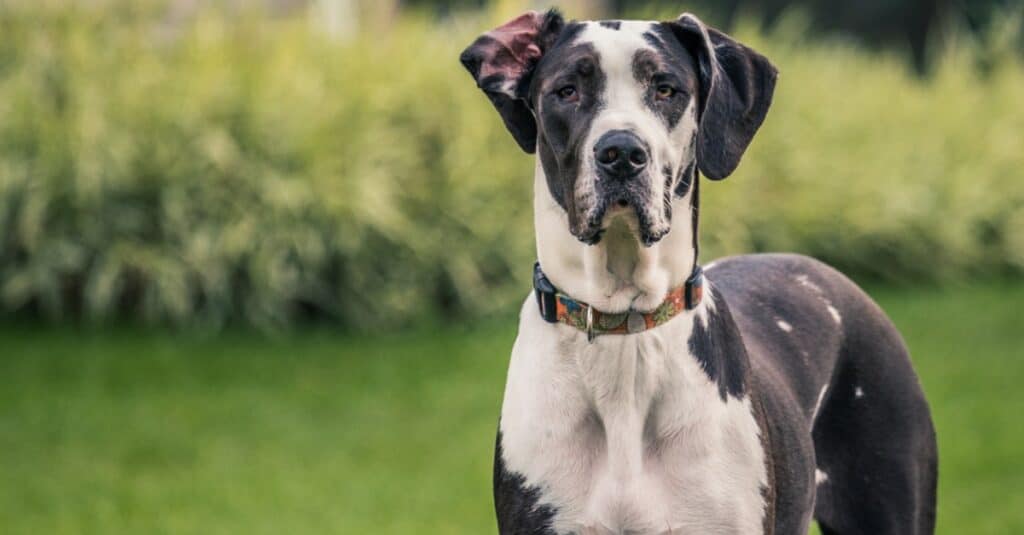
American Great Danes have slimmer necks and bodies with tighter skin than European Great Danes.
©iStock.com/Earl-Wilkerson
American vs European Great Dane: Coat Type
Both Great Danes have a coat that is short, dense, and glossy in appearance. However, American Great Danes have slimmer necks and bodies with tighter skin than European Great Danes. A European Dane has a longer neck, a wider torso, and more wrinkles than an American Dane.
American vs European Great Dane: Colors
The AKC recognizes seven primary colors for the American Great Dane:
- Black
- Brindle
- Fawn
- Blue
- Merle
- Harlequin
- Mantle
For European Great Danes, the colors recognized by the FCI are nearly identical, although they have additional colors such as:
- Plattenhunde – White base with big black spots.
- Mantletiger – Black coats with white muzzles, belly, chest, legs, neck, and tail tip.
Characteristics

The European Dane is a more laid-back and gentler Great Dane.
©Guy J. Sagi/Shutterstock.com
American vs European Great Dane: Temperament
In addition to their physical differences, American and European Great Danes have different temperaments. The European Dane is a more laid-back and gentler Great Dane. If you’re looking for a family dog that’s both friendly and affectionate, go no further than the European Dane!
American Great Danes are terrific family dogs as well, although they are a little more high-strung in their early years. Compared to European Danes, American Danes are more athletic and graceful.
American vs European Great Dane: Trainability
While it is believed that American Great Danes are easy to train, European Great Danes are supposed to be obstinate learners. European Great Danes are intelligent, but they do have one flaw: they seek consistency. They will obey your command only if they believe you are trustworthy and adhere to a rigid schedule.
Health Factors
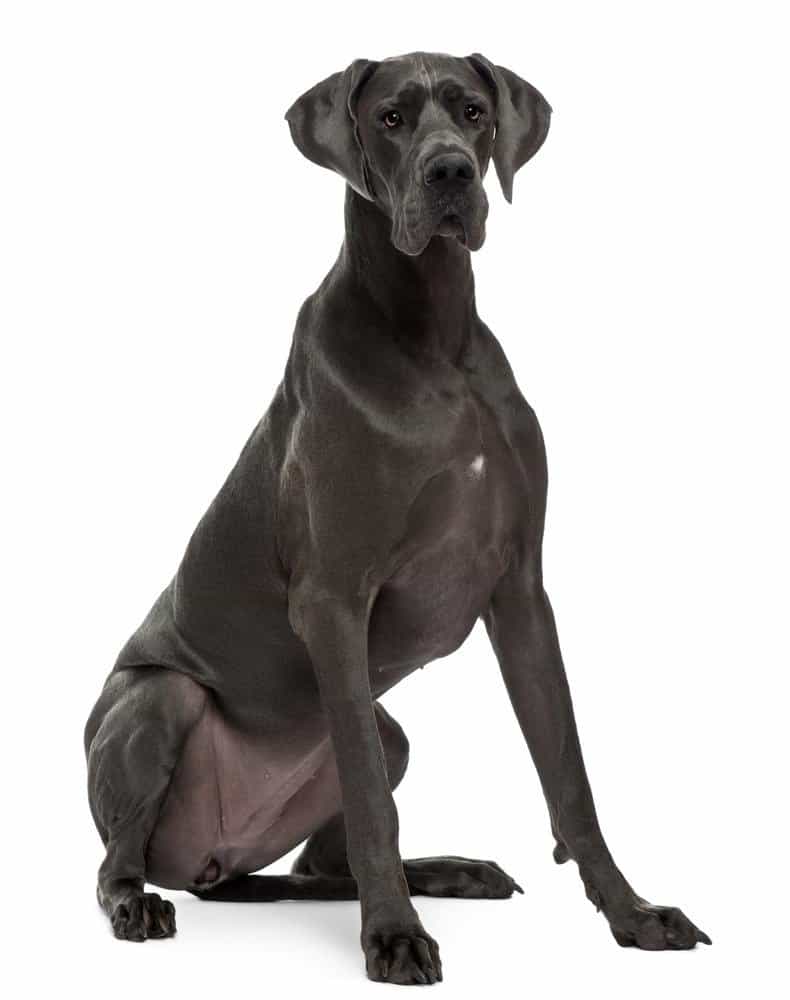
While it is believed that American Great Danes are easy to train, European Great Danes are supposed to be obstinate learners.
©Eric Isselee/Shutterstock.com
American vs European Great Dane: Life Expectancy
It is a well-known truth that Great Danes have a short lifespan due to many issues caused by their size and DNA. Regrettably, the lifespan of a European Great Dane is typically 6 to 8 years, while the lifespan of an American Great Dane is 9 to 10 years. They have been known to survive up to 13 years in some situations, but that is about all.
American vs European Great Dane: Health Problems
In terms of health, the American and European Great Danes are very similar due to their large body types. Both breeds are prone to the following diseases:
- Cardiomyopathy
- Hypothyroidism
- Hip Dysplasia
- Tears in the Cruciate Ligament
- Disease of the Tricuspid Valve
- Addison’s Disease
- Wobbler Syndrome
Bear in mind that European Great Danes are considerably more likely to suffer bone and joint problems than American Great Danes due to their extra-large size.
Wrapping up American vs European Great Dane
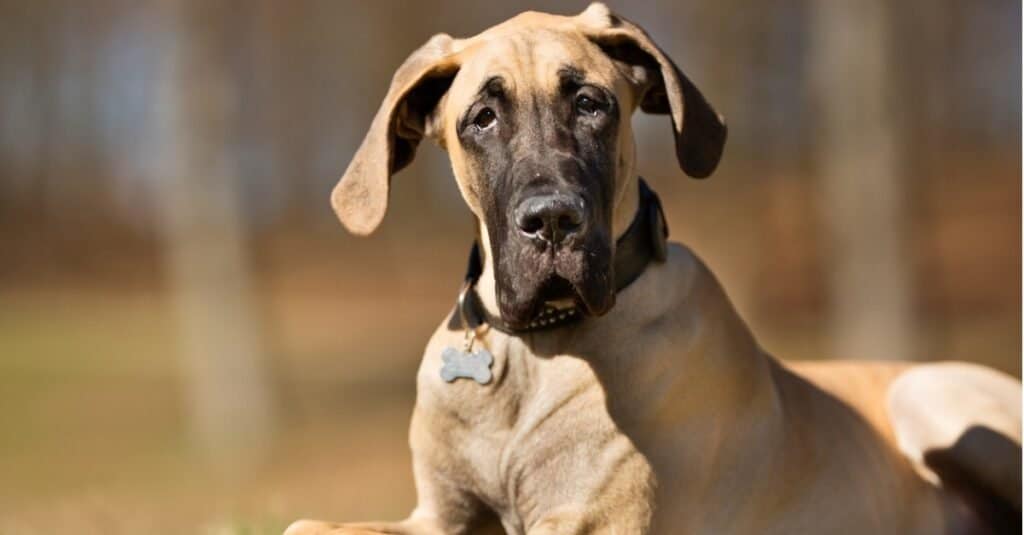
The lifespan of a European Great Dane is typically 6 to 8 years, while the lifespan of an American Great Dane is 9 to 10 years.
©iStock.com/Bigandt_Photography
Whether you choose an American-bred Great Dane or one of European ancestry, the Great Dane is a delightful companion and loving family member. They have a strong focus on people and are often calm. They may be playful, goofy, and a lot of fun.
Even though the American and European Great Dane are fundamentally the same breeds, they began to diverge due to breeding practices and pet owner preferences. There is certainly a need to discuss their differences because many pet owners are purchasing them based on the prestige of their geographical indicators instead of their actual style.
Are Great Danes Smart?
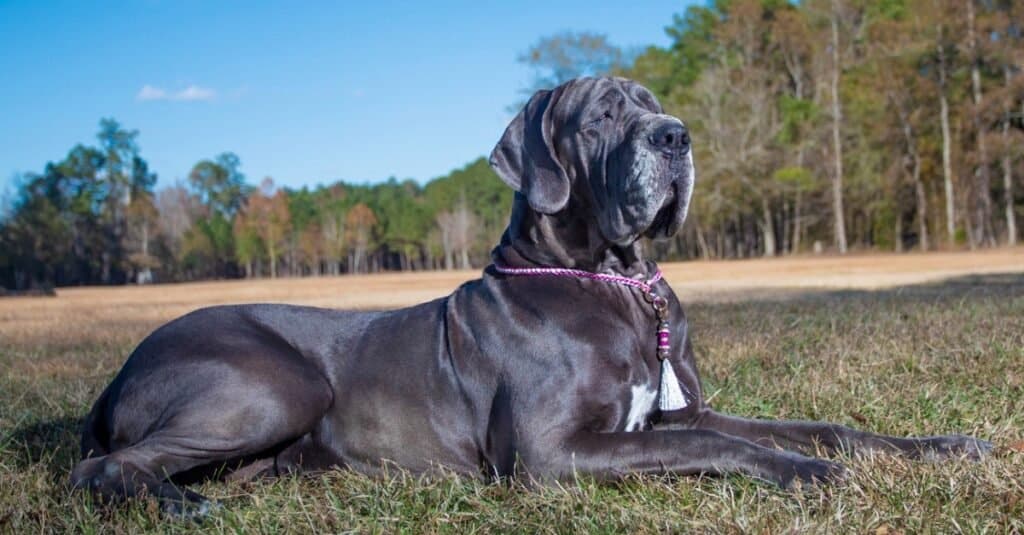
Despite their daunting size, Danes are highly affectionate and social.
©iStock.com/gsagi
Great Danes, both American and European, are not only large dogs but are smart ones as well. An average Great Dane is thought to be as smart as a three-year-old child. Based on studies, it has been illustrated that they are capable of understanding up to 250 different gestures and words, as well as being able to learn new words.
Additionally, they are not only able to learn commands rather quickly, but they are able to retain that information for a longer period of time. Unlike other dog breeds that may not hold on to learned behavior for an extended length of time, Great Danes are able to remember their learned information, like tasks and commands, for up to two years.
The photo featured at the top of this post is © iStock.com/Earl-Wilkerson
Ready to discover the top 10 cutest dog breeds in the entire world?
How about the fastest dogs, the largest dogs and those that are -- quite frankly -- just the kindest dogs on the planet? Each day, AZ Animals sends out lists just like this to our thousands of email subscribers. And the best part? It's FREE. Join today by entering your email below.
FAQs (Frequently Asked Questions)
Did you know?
Did you know that the beloved Scooby Doo’s canine breed is modeled after the Great Dane? Scooby, like the majority of Great Danes, has lanky, slender legs and a long, stocky torso. Scooby, on the other hand, has a less elegant structure and body type than the majority of Great Danes making him a bit more cartoonish.
Thank you for reading! Have some feedback for us? Contact the AZ Animals editorial team.






